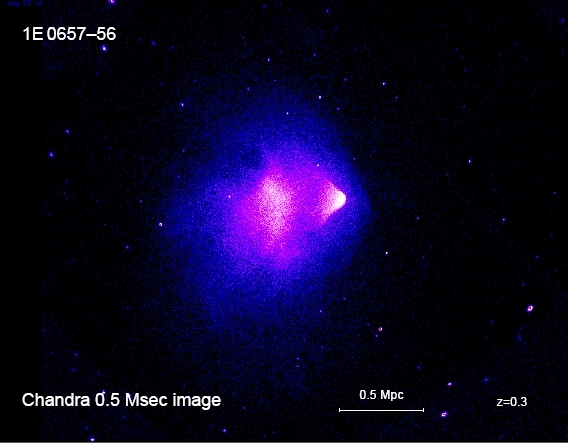Dark Matter in the Bullet Cluster
Posted by John Baez
Welcome to the n-Category Café!David Corfield, Urs Schreiber and I have decided to join forces and take over the universe - with Jacques Distler providing invaluable technical support.
But we’re just getting started here…so for now, check out this picture of the "Bullet Cluster" - actually two galaxy clusters colliding at 5000 kilometers per second:
You can read more about this in week238 of This Week’s Finds.
The basic idea: on Wednesday August 15th, a press release came out entitled NASA Announces Dark Matter Discovery. It didn’t say what they found. They’re trying to build up suspense for a mysterious press conference on Monday the 21st. But since one of the folks at the teleconference is Maxim Markevitch, who has found dark matter in the Bullet Cluster, I can guess what this press conference will be about - and I’ll tell you! It’s pretty cool.
Posted at August 17, 2006 11:32 AM UTC

 Despite its pompous name, “fundamental physics” (the quest for the basic laws of physics) is not more important than all the other kinds of physics. But there are a bunch of people who like fundamental physics and feel very frustrated at its slow progress, so to them, this new avenue for progress is very exciting.
Despite its pompous name, “fundamental physics” (the quest for the basic laws of physics) is not more important than all the other kinds of physics. But there are a bunch of people who like fundamental physics and feel very frustrated at its slow progress, so to them, this new avenue for progress is very exciting.
Re: Dark Matter in the Bullet Cluster
You can read more about this stuff on the Chandra website. It’s just like I guessed, with not much new except some really cool pictures.